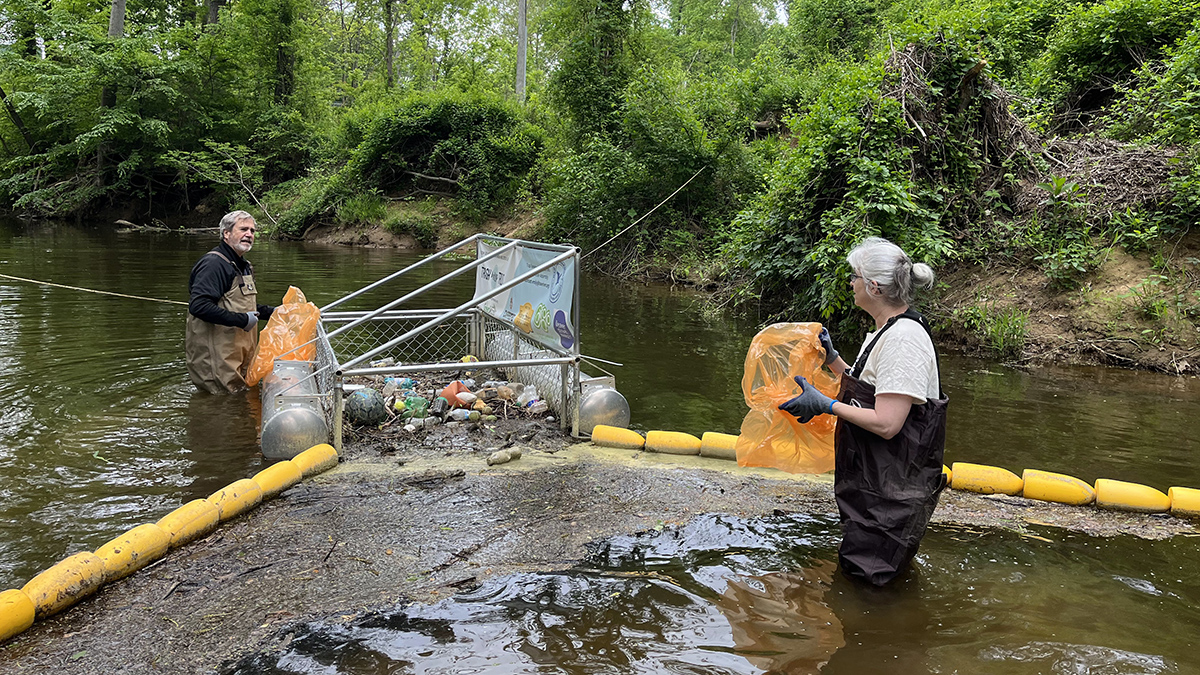Source: Community Science
When plastic waste enters waterways, it can endanger aquatic animals, damage habitats, and splinter into tiny pieces that may affect ecosystems for centuries to come.
One tool used to collect and study the trash found in bodies of water is the trash trap—an anchored floating device that funnels trash toward an enclosed collection area. Between 2021 and 2024, seven North Carolina Waterkeepers organizations installed 21 trash traps in streams around the state, periodically cleaning them out and collecting the contents. Lauer et al. analyzed the products of these cleanouts.
Staff and volunteers retrieved 150,750 pieces of litter from 368 cleanouts of the traps during the study period. They then organized the collected trash into different categories. Different organizations used different protocols, but the most common was developed by the Haw River Assembly (HRA) and the Duke University Environmental Law and Policy Clinic. The Duke/HRA protocol divided trash into six major groups (plastic film, hard plastic, foamed plastic, metal, glass, and “other”) and 33 subcategories, such as plastic bags, food wrappers, drink bottles, and polystyrene foam fragments (Styrofoam).
About 96% of trash categorized with the Duke/HRA protocol was plastic. Of this, 72.6%, or nearly 83,000 pieces, was Styrofoam fragments. This material was particularly tricky to catalog, the researchers noted, because it breaks down into tiny pieces that are difficult to retrieve.
More litter tended to accumulate in regions with higher populations and more development. Increased rainfall drove greater trash collection in about half the traps, because rain helps carry trash into rivers and streams. Similarly, traps located in areas with more impervious surfaces, such as streets and pavement, tended to accumulate more trash because these surfaces channel litter through storm drains and into nearby waterways.
The researchers note that trash traps do not collect all trash, and that cleanouts can be labor intensive, but they also highlight benefits of this type of data collection: It can help scientists understand local sources of litter, engage the public in community science, and provide a basis for targeted policies aimed at reducing plastic pollution. (Community Science, https://doi.org/10.1029/2024CSJ000122, 2025)
—Rebecca Owen (@beccapox.bsky.social), Science Writer



